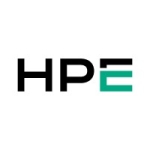I work in a consulting firm, and our primary task is to assist customers in deploying various products based on their needs. We handle the implementation and administration of these products initially. However, after a while, we transition as a part of the customer's team, enabling them to manage the systems themselves.
With Oracle Enterprise Manager Cloud Control, you can specifically gather primary system information, such as processor usage and hardware metrics. This is particularly useful for optimizing performance. It helps in identifying the best performance configurations, understanding which utilities have an impact, and pinpointing tools that may pose challenges for servers or other systems. This is crucial for comprehending data performance and protecting the efficiency of both databases and systems.
It would be beneficial if they could offer the functionality of planned DV patches linked with support. A one-click user agreement could apply these patches to the most appropriate addresses. While not a major update, rather a small package like from 19.13 to 19.14, it would be great in keeping the customer database up to date.
The solution is stable. I’ve not faced any issue.
This is a challenging question. About the support team, some individuals respond promptly and effectively. However, there are also cases where solving the problem independently rather than waiting for a reply is more efficient. So, I've had both positive and negative experiences with support.
If you are familiar with Oracle products and can understand the documentation provided by Oracle, there shouldn't be any difficulties with initial setup.
It falls in the middle when it comes to cost—it's neither expensive nor cheap, particularly in the context of mitigation.
I recommend checking the performance of systems like understanding what's happening in databases, servers, and other environments, and assessing the number of environments and server needs. You should explore the entire service. If you have all the right tools and knowledge, it's good for you.
Overall, I rate the solution a six on ten. It's great in terms of Oracle products, especially for Oracle databases, performance tunings, and performance advisory. However, its compatibility with the rest of the products in the market is less.












